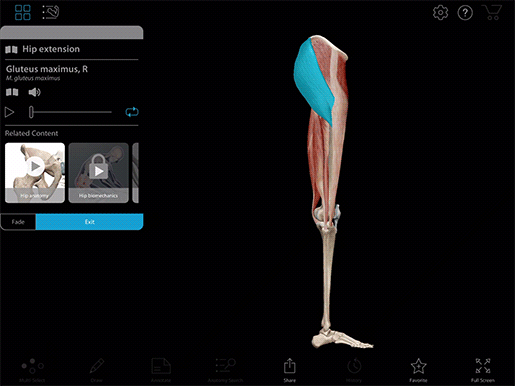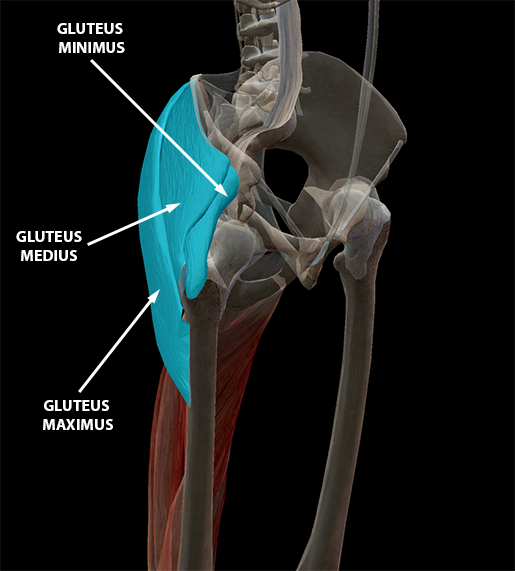Posted on 8/24/19 by Laura Snider
We love cool medical technology here at Visible Body, so it’s no surprise that a story about an exosuit that can make both walking and running easier caught our attention! (Also, the sci-fi flavor of the word “exosuit” is undeniable.)
This cutting-edge wearable robot that can adapt to walking and running is the subject of a new study published in Science on August 16. The project was a collaboration between scientists from Harvard’s Wyss Institute for Biologically Inspired Engineering and John A. Paulson School of Engineering and Applied Sciences (SEAS) and the University of Nebraska Omaha.
At first glance, the device might look unassuming—in fact, it looks like a pair of bicycle shorts attached by cables to a box at the level of the wearer’s waist—but indoor tests on a treadmill found that the exosuit “reduced the metabolic costs of walking by 9.3% and of running by 4% compared to when [wearers] were walking and running without the device.” Though the device itself weighs 11 pounds, the metabolic savings it provides is the equivalent of the wearer moving as if they’re 16 pounds lighter when walking or 12 pounds lighter when running.
So how does the device help its wearer cut down on the metabolic costs of locomotion? One of the study’s authors, Harvard engineering professor Conor Walsh, describes the exosuit as a sort of “artificial muscle” that helps out the body’s own muscles. More specifically, the exosuit assists the gluteal muscles in hip extension using a cable actuation system to “generate an external extension torque at the hip joint that works in concert with the gluteal muscles.”

Hip extension (feat. gluteus maximus). Video footage from Muscle Premium.
If you’re not familiar with the gluteal muscles, here’s a quick overview. There are three gluteal muscles: gluteus maximus, gluteus medius, and gluteus minimus. During walking and running, gluteus maximus functions as one of the prime movers of hip extension and gluteus minimus and medius help stabilize the hips and pelvis.
 The gluteal muscles. Image from Muscle Premium.
The gluteal muscles. Image from Muscle Premium.
Perhaps the coolest and most innovative aspect of this device is that its cable actuation system can adjust to when the wearer is walking vs. running. The exosuit detects differences in its wearer’s gait by keeping track of the acceleration of their center of mass via a system of sensors. Then the cable system’s function adjusts accordingly.
Ultimately, the authors of the study are confident in the wide range of applications for such lightweight and adaptable wearable technology. The walking/running exosuit can assist everyone from hikers on challenging terrain to soldiers carrying heavy loads to individuals with mobility challenges. For example, Prof. Walsh led a team back in 2017 that created an ankle-assisting exosuit to help patients recovering from strokes. Walsh’s lab has collaborated with ReWalk Robotics to make a version of that suit commercially available in the US and Europe.
Want to learn more about the glutes and how muscles produce movement? Check out these VB Blog posts:
Be sure to subscribe to the Visible Body Blog for more anatomy awesomeness!
Are you an instructor? We have award-winning 3D products and resources for your anatomy and physiology course! Learn more here.
When you select "Subscribe" you will start receiving our email newsletter. Use the links at the bottom of any email to manage the type of emails you receive or to unsubscribe. See our privacy policy for additional details.
©2026 Visible Body, a division of Cengage Learning